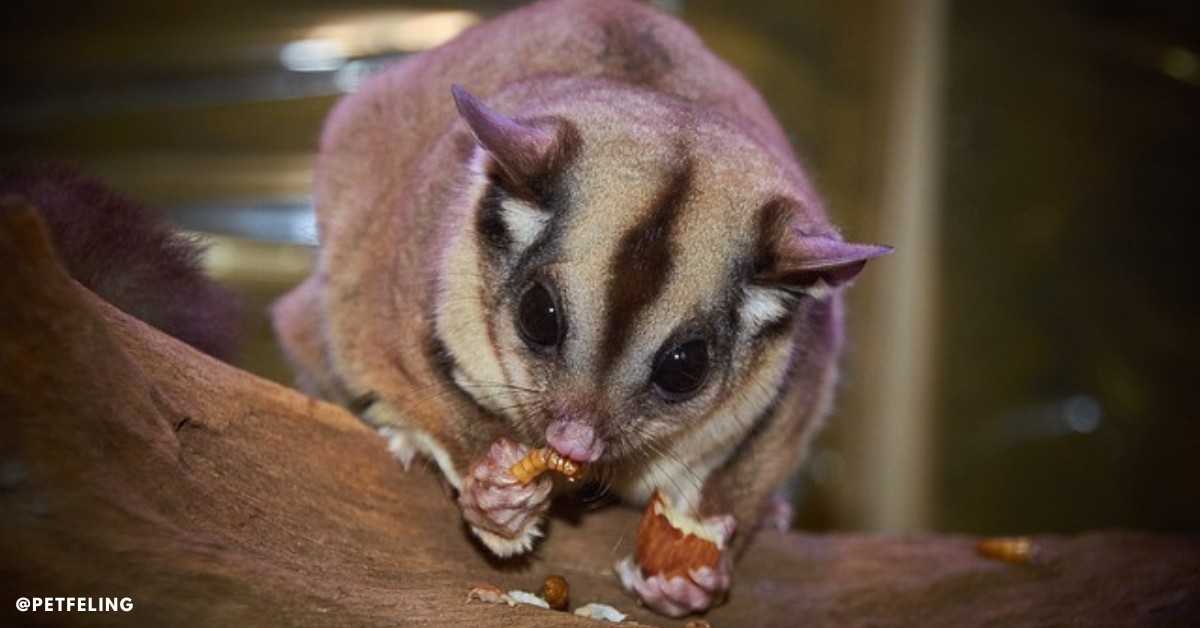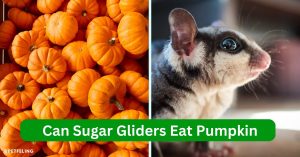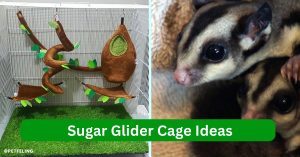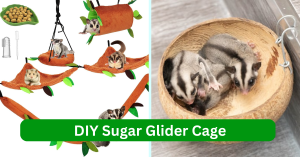There are various theories on what you should give a sugar glider every day. However, the majority of sugar glider experts agree that when raised in captivity, these lovely creatures require a varied diet of fruit, vegetables, and protein. We advise feeding mealworms, mealworm habitat basics, The Pet Glider Multi-vitamins with calcium sprinkled on top, and The Pet Glider Diet every day. We believe that this diet, along with the tender loving care we provide our sweethearts on a daily basis, is the reason we have one of the best reputations for having healthy gliders.
We are aware that making our sugar glider food requires a little more time than making powdered alternatives, but it is well worth the extra effort. Always congratulate the chef; your sugar gliders will appreciate it. Anything that contains sugar, color additives, or preservatives should not be fed. In the wild, gliders consume very little fat and exert a lot of energy when gliding through the rain forest. Without a balanced diet, gliders raised in captivity risk gaining weight and developing health issues. Animals like sugar gliders have strong metabolisms and are quite active.
Therefore, it’s crucial to always keep food for the sugar gliders in their cage. Every day in the late afternoon, we advise you to give them the fresh diet indicated below as their main meal, along with a few healthy treats and mealworms. Of course, you should also make sure they always have access to clean, fresh water. Keeping brunch and glider biscuits in their cage as “free feed” choices in addition to the main meal is strongly advised.
DIET
Dietary recommendations for sugar gliders vary according to a number of hypotheses. The majority of experts on sugar gliders concur that, when nurtured in captivity, gliders need a fresh diet consisting of various fruits, vegetables, and protein sources With Vitamins which contain minerals, calcium, bee pollen, acacia gum, freshly powdered milk thistle, and probiotics sprinkled on top, we suggest the diet as a daily source of nourishment. Anything that contains sugar, color additives, or preservatives should not be fed. In the wild, gliders consume very little fat and exert a lot of energy when gliding through the rain forest. If given a poor diet, gliders raised in captivity may gain weight and experience health issues. Animals like sugar gliders have strong metabolisms and are quite active. As a result, it’s crucial to have a constant supply of basic food in their cage for them to gnaw on. Additionally, as their primary source of nutrients, we advise serving our fresh diet every day. Mealworms and occasionally nutritious sweets are other options. Ensure that fresh water is always available for gliders.
STAPLES
Cereal: The high-protein, low-fat cereal we use contains human-grade chicken. Per glider, a normal serving is one teaspoon.
Monkey Biscuits: The Mazuri Growth and Repro biscuits, which contain 25% protein, are those we suggest and provide for sale. This essential has a dental guard and will keep the teeth of your sugar gliders clean and in good condition. We advise using 1/2 to 1 biscuit per glider. The Pet Glider store is where you can buy both the cereal and the monkey cookies. Maintain these supplies in your gliders’ cage at all times, and fill the dish with new food each day. To retain its one-year shelf life, sugar glider brunch should be kept in an airtight container in the freezer. You can store your brunch for six months at room temperature.
FRESH WATER
Make sure to give your sugar glider fresh, purified water every day. We recommend drinking filtered water and keeping a full water bottle on hand at all times. Each week, empty the contents of the bottles and clean them to stop the formation of bacteria. We do not recommend Gliderade. It has a lot of sugar and an unknown number of vitamins. Instead of bowls, it uses water bottles for its gliders. Bowls can cause bacterial growth and drowning. Glass bottles are strongly advised.
MEALWORMS
The sugar glider’s favorite food item! 7-8 giant-sized live mealies are a high-protein treat that can be given to gliders every day. Mealworms are a fantastic tool for creating a bond with your sugar glider or for entertaining yourself while hand-feeding your pet.

TREATS
Yogurt drops, dried cherry drops, dried mango chunks, dried mealworms, and dried crickets are additional foods that help cheer up sugar gliders. Your sugar gliders will squeal with delight when you cut up fresh fruit like watermelon, oranges, and sweet potatoes. Use them lightly because they are not their primary diet.
VITAMINS
Every day, you must add calcium-fortified vitamins to your glider’s food. There are vitamins that are specially formulated for sugar gliders and have a minimum 4:1 calcium-to-phosphorus ratio. Reptile vitamins should not be used with small mammals! Many breeders throughout the world sell our vitamins. There are 30, 90, 180, and 360-day supplies available. Breeders and small businesses can purchase bulk supplies. The ratio of phosphorous to calcium in the sugar gliders’ diet, which calls for a lot of fruits and vegetables, is the exact opposite. Brittle bones that are easy to fracture or shatter will result from a high-phosphorus and low-calcium diet. Your glider will become ill from a calcium deficit before developing a hind leg or complete paralysis.
Contact your exotic animal vet right away if you detect any trembling, shaking, difficulty getting inside the cage, or holding onto the perch. Multivitamins with calcium powder should always be kept in the fridge. As a result of the probiotics, do not freeze. Nutritional supplements include a multivitamin and multimineral with calcium and amino acids, freshly ground milk thistle for healthy liver function, high-grade probiotic powder for nutrient absorption and intestinal flora, acacia gum powder high in calcium, 100% whey protein isolate, and coconut nectar. Bee pollen for the immune system and milk thistle for healthy liver function are also included.
The proper food for their gliders is one of the most important things every parent of a sugar glider has to be aware of. When it comes to food, sugar gliders can be a little picky, so it’s important to use the correct recipes. The essential recipes for all parents of sugar gliders are listed below.
RECIPES
1.BML Diet for Sugar Gliders
It’s easy to make the sugar glider diet for the Bourbon’s modified leadbeater at home. It comes close to replacing the traditional Leadbeater’s Diet. Since the majority of the original diet ingredients were unavailable on the American market, innovation was required. Because gliders can be somewhat finicky, you should use extreme caution before substituting any items in the recipes. An outline of the BML sugar glider diet recipe is provided below.
Ingredients
- 1/4 cup of dry baby food
- Apple juice, 1/4 cup
- 5 oz. of chicken baby food and 1 cooked egg
- Wheat germ, 1/4 cup
- 1 tablespoon Rep-Cal Herpivite (blue label) vitamin supplement
- Blended juice, 4 ounces
- one-half cup of filtered honey
- two teaspoons of the pink-labeled calcium supplement Rep-Cal without phosphorus and vitamin D3
Directions
- The egg, honey, and apple juice should be thoroughly blended.
- Blend the Gerber juice with the blue-labeled vitamin supplement until the liquid is smooth.
- Wheat germ, dry baby cereal, chicken baby food, and pink-labeled Rep-Cal should all be added.
- Blend once more until uniform.
- Fill each compartment of your ice cube tray halfway with your mixture, then freeze it.
- A minimum of an hour before feeding, remove frozen cubes to allow for melting.
- Be aware that vegetables should be added to the BML diet as a supplement.
- If you decide to use frozen vegetables, take out the ice cube and the vegetable at the same time. If your glider gets hungry during the day, you can give them treats, fresh fruits, or mealworms to eat.
- However, the BML diet is a full meal, so it should sustain them all day.
2. The Pet Glider Diet (TPG)/ Priscilla Price Diet (PP Diet)
This diet allows to experiment with the recipe by switching out the suggested fruits and veggies to give to sugar glider something different.
Ingredients
- 2 cups of fruit, either fresh or frozen
- 2 cups of vegetables, either fresh or frozen
- six to eight ounces of plain, full-fat yogurt
- 6 tablespoons of calcium-fortified orange juice in concentrated form
- Oatmeal, uncooked, in 6 to 8 tablespoons
- Unsweetened applesauce in four cups
- 8 to 12 ounces of protein.
- 1-2 tablespoons of ground flax seed or wheat germ
- Any of the fruits listed below may be used: Blueberries, strawberries, raspberries, peaches, kiwis, papayas, tangerines, mangos, bananas, cantaloupes, peaches, and pineapples
- Use at least four different fruit varieties, though. The finest vegetable choices are as follows: Kales, green beans, potatoes, peas, carrots, lima beans, jicama, squash, bok choy, snow peas, red bell pepper, sweet potatoes, and collards are among the vegetables that are included.
- Again, for every recipe, use at least four different kinds of veggies.
- Try chicken, turkey, or eggs for the protein.
Directions
- Chop your fruits and veggies in a food processor. Cut them into little bits if you don’t have a processor.
Prepare your proteins. - All ingredients, with the exception of the oats, should be properly combined.
- Oatmeal can be added to the mixture to give it a cake-like consistency.
- Add 1/8 teaspoon of multivitamin powder and 1/8 teaspoon of calcium powder per person with each serving of your frozen mixture.
3. Leadbeater’s Mix as Modified by the Pocket (PML)
This is definitely your go-to dish if you need to prepare something for your gliders quickly. It is quick and easy to do.
Ingredients
- 2 hard-boiled or shelled eggs;
- 13/4 cup of water;
- 13/4 cup of honey;
- and 30 grams of Wombaroo High Protein Supplement
Directions
- The water should be heated in a microwave-safe bowl for two minutes. Add the honey and whisk until the honey is dissolved. Your honey and water mixture should be blended in a food processor before being combined with the egg to create a smooth mixture.
- Include the Wombaroo high-protein supplement and mix for another minute.
- Freeze your concoction.
- Give your glider only 50% of the PML diet while feeding them, and add 1-2 tablespoons of fruits or vegetables as a supplement.
4. Original Wombaroo diet high in protein (OHPW)
The OHPW was actually inspired by the MPL sugar glider diet, and it’s also quite easy to create.
Ingredients
- Wombaroo high protein powder, 1/4 cup
- two glasses of hot water.
- honey, 1.5 cups
- 3-egg scrambled without any seasoning1 tablespoon of pollen from bees
Directions
- In the microwave, cook your eggs, pausing to stir them every 30 seconds, until they are done.
- To create a consistent mixture, blend honey and water.
- Continue stirring after adding your HPW powder.
- Bee pollen, eggs, and 1 cup of the HPW mixture should be blended for two minutes.
- Blend for two minutes after adding your initial batch.
- Pour the mixture into a freezer-safe container. Add 1 spoonful of fruits and vegetables per glider while feeding them.
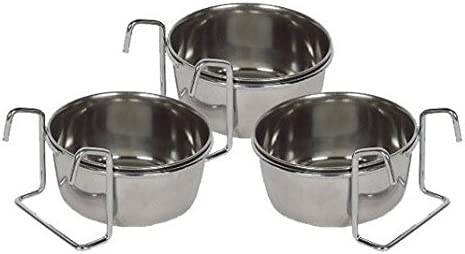
Conclusion
It can be difficult to choose the ideal supper for your sugar glider. Each diet has drawbacks. Please weigh the advantages and disadvantages of each food dish to decide which is best for you and your gliders. The most crucial step is to seek advice from a veterinarian with knowledge of treating exotic animals to identify the ideal overall diet.
FAQ Section
What kind of diet is ideal for sugar gliders?
the diet of sugar gliders A pet sugar glider should eat largely what vets refer to as “Leadbeater’s mixture” in order to mimic a natural diet. Homemade ice cube trays can be used to freeze this soft mixture of beef, eggs, honey, and supplements for convenient storing and portioning.
What types of food should sugar gliders avoid eating?
Avoid foods known to be high in oxalates since they will make it harder for your body to absorb calcium. Raspberries, strawberries, blackberries, spinach, carrots, beets, pears, lettuce, figs, and collards are among the foods to be wary of. Since raw maize is also quite sweet, it should only be fed very infrequently.
Do sugar gliders only eat fruit?
In the wild, sugar gliders are opportunistic omnivores. They mostly consume vegetables, bug nectar, tree sap, nectar, and some fruits.
Which proteins are ideal for sugar gliders?
Protein is crucial for sugar gliders’ nutritional health. A naturally occurring source of protein is provided by insects like mealworms and crickets. Lean meats, neonatal mice, eggs, and other sources of protein include these.
What food kills or are poisonous for sugar gliders?
Never give gliders tap water because its toxins, such as fluoride and chlorine, can be harmful. Always use bottled drinking water or spring water. Avocado, Brussels sprouts, cauliflower, leeks, lettuce and other greens, peas, turnips, and garlic are some additional veggies that could be harmful.
Can sugar gliders eat yoghurts?
Sugar gliders are given flavored yogurt, and usually choose the varieties that the colony as a whole seems to prefer. I’ve discovered that most gliders prefer the scents of vanilla, peach, and blueberry.
